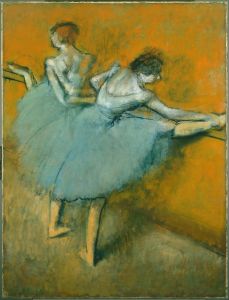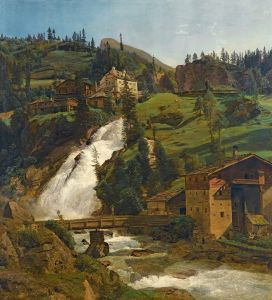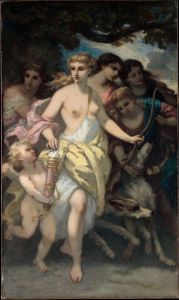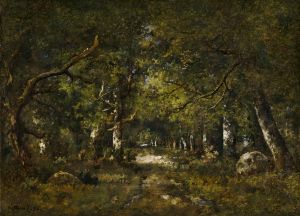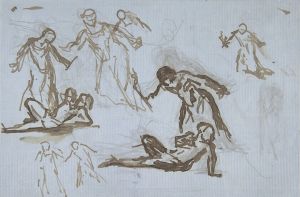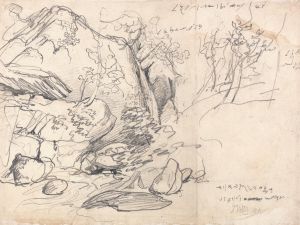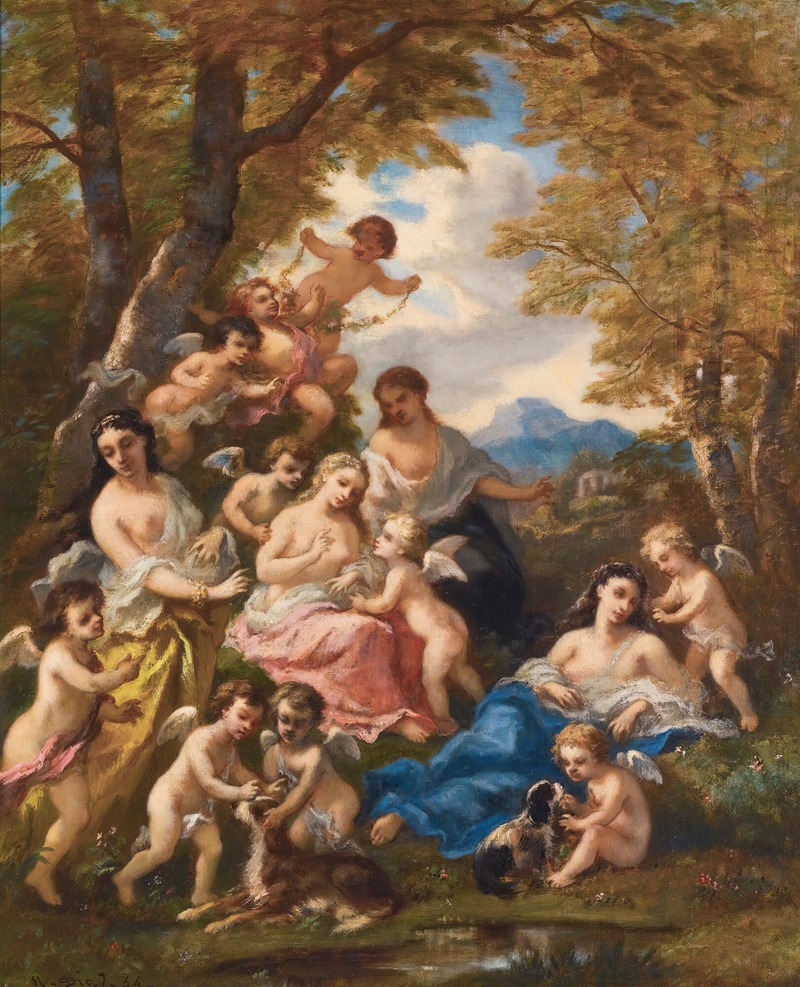
Nymphes Et Amours
A hand-painted replica of Narcisse-Virgile Diaz de La Peña’s masterpiece Nymphes Et Amours, meticulously crafted by professional artists to capture the true essence of the original. Each piece is created with museum-quality canvas and rare mineral pigments, carefully painted by experienced artists with delicate brushstrokes and rich, layered colors to perfectly recreate the texture of the original artwork. Unlike machine-printed reproductions, this hand-painted version brings the painting to life, infused with the artist’s emotions and skill in every stroke. Whether for personal collection or home decoration, it instantly elevates the artistic atmosphere of any space.
Nymphes et Amours (Nymphs and Loves) is a painting by the French artist Narcisse-Virgile Diaz de la Peña, a prominent figure of the Barbizon School. The exact date of the painting's creation is not definitively documented, but Diaz de la Peña was most active during the mid-19th century, particularly in the 1830s to 1860s. Known for his romantic and atmospheric depictions of nature, Diaz often incorporated mythological or allegorical themes into his works, as seen in this painting.
The artwork depicts a group of nymphs, mythological female figures associated with nature, in a lush, idyllic setting. The composition is characterized by its sensual and dreamlike quality, with the figures of the nymphs rendered in soft, flowing forms that harmonize with the surrounding landscape. The "Amours" in the title likely refers to cherubic figures or representations of love, which were common motifs in 19th-century art. The painting reflects Diaz's skill in capturing light and texture, particularly in the interplay between the figures and the natural environment.
Diaz de la Peña was deeply influenced by the Romantic movement, which emphasized emotion, imagination, and the sublime beauty of nature. His works often feature rich, vibrant colors and a focus on the interplay of light and shadow, techniques that are evident in Nymphes et Amours. The painting also demonstrates his interest in the human form and his ability to blend classical themes with the naturalistic approach favored by the Barbizon School.
While Diaz de la Peña is best known for his forest scenes inspired by the Fontainebleau Forest, he occasionally ventured into more fantastical or allegorical subjects, as seen in this work. Nymphes et Amours exemplifies his ability to merge the real and the ideal, creating a scene that is both grounded in naturalism and imbued with a sense of otherworldly beauty.
The current location of Nymphes et Amours is not widely documented, and it is unclear whether the painting resides in a public collection, private ownership, or has been lost to history. Diaz de la Peña's works, however, are held in major museums worldwide, including the Louvre in Paris and the Metropolitan Museum of Art in New York, reflecting his enduring legacy as a key figure in 19th-century French art.
No further specific details about Nymphes et Amours are available in existing historical records.







